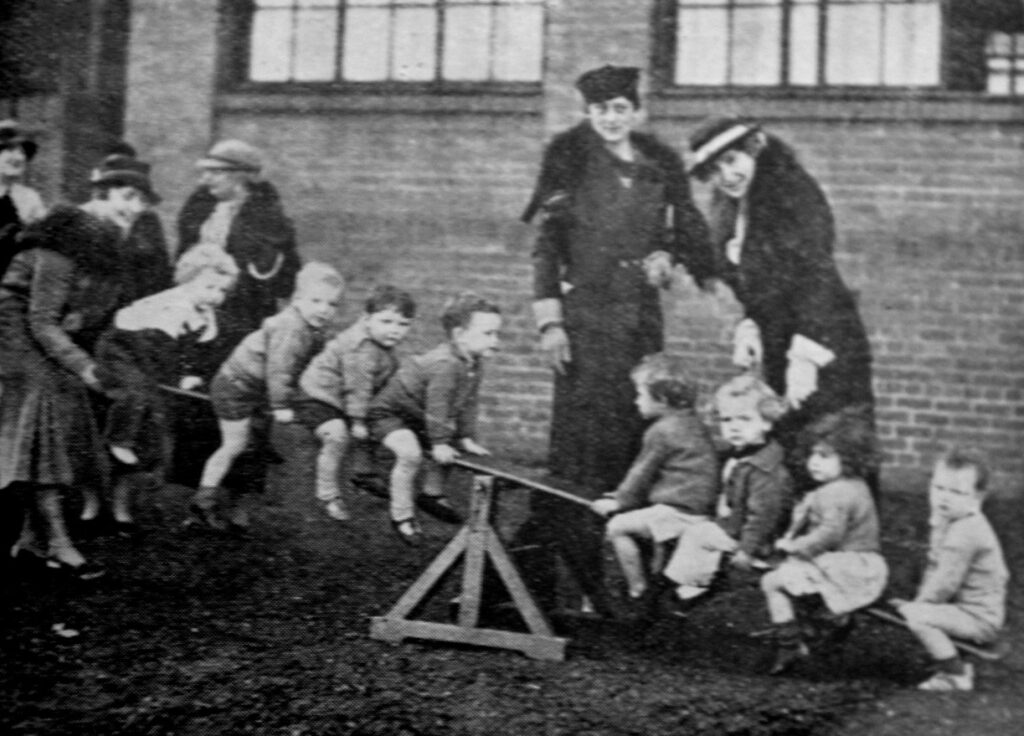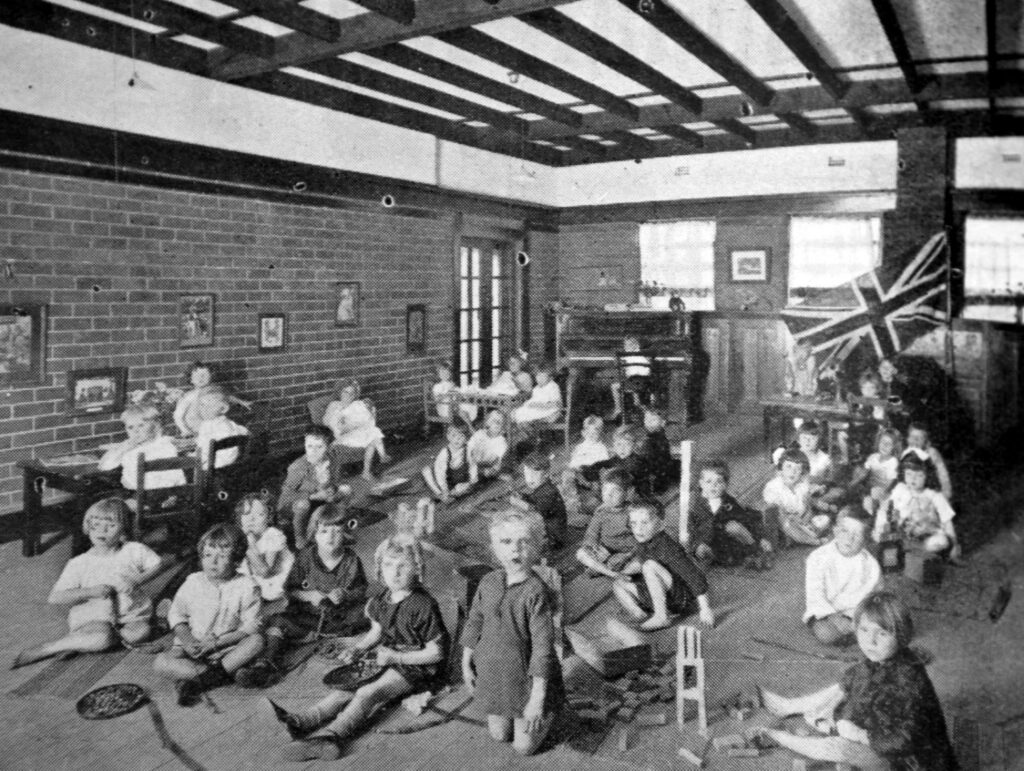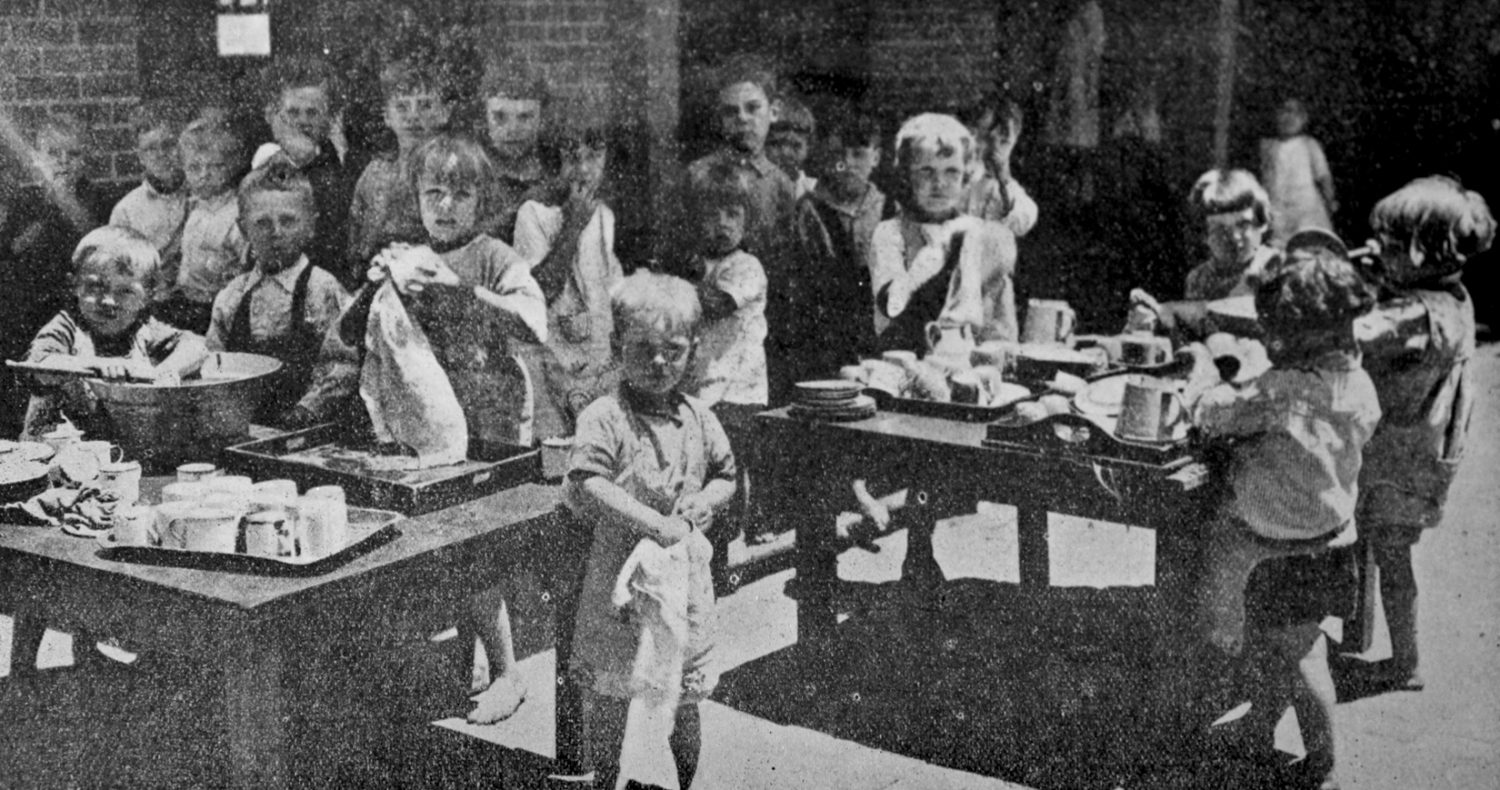By 1911, Kindergarten Unions have been established in every state with each providing poor children access to Free Kindergartens. Although individuals from the various Kindergarten Unions travel interstate to exchange ideas and learn from one another, and there are calls for the Unions to consolidate their work, each organisation remains formally unconnected.
In the early 1930s, the first serious attempt to join the state based Kindergarten Unions into a national organisation comes from NSW, with the formation of the Commonwealth Kindergarten and Primary Association. The Association intends to affiliate those interested in the education of children from across the country, and is launched at a State Conference in June 1931. There are 240 members that year and a great deal of interest in the Association nationally, however, it ultimately proves difficult to attract members outside NSW and the Association disbands.
The desire to establish a national body does not diminish and by the late 1930s the social and political conditions are ripe for the formation of the Australian Association for Pre-School Child Development (AAPSCD). The Great Depression (1929-32) has a devastating effect on Australian society, leading to widespread poverty, malnutrition, ill-health, over-crowded housing, and high infant, child and maternal mortality and morbidity. Towards the end of the 1930s there are heightened concerns about looming war and Australia’s capacity to ‘produce’ strong fighting men. While the health of infants and school age children is supported by Baby Welfare Clinics and School Nurses, there are few services for preschool age children.


The AAPSCD is initiated by Lady Zara Gowrie (wife of the Governor General and Patroness-in-Chief of the Free Kindergarten Union of Victoria) who invites representatives from the various Kindergarten Unions attending the Women’s Congress on Child Welfare in South Australia, to a meeting in September 1936. A month later, in Melbourne, Lady Gowrie meets with representatives from the Kindergarten Unions, including Lady Julius from NSW, and organises a subsequent meeting to form a national body to represent all the Unions on national affairs. At this third meeting, held on March 17 1938, the AAPSCD is formed:
- To co-ordinate the work of the six Kindergarten Unions;
- To set up standards for the guidance of young children in Nursery-Kindergartens;
- To set standards for the training of Kindergarten teachers;
- To establish a Federal Bureau of Publications relating to preschool work, and
- To organise a Conference biennially

When in 1938 the Commonwealth Government decides to invest heavily in early childhood services for the first time, the only national body representing early childhood, the fledgling AAPSCD, is the recipient of those funds.
Subsequently, the Association is given sole responsibility for implementing the Commonwealth Government’s main initiative to support preschool child development – the establishment of Model Child Development Centres, in each state capital city to act as ordinary kindergarten training centres for children; provide medical supervision of the preschool child similar to, but better than the school medical systems; and to act as demonstration centres showing how such centres should be run.
The centres are named Lady Gowrie Child Centres in honour of AAPSCD’s first Patron.

